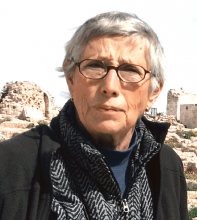You are here
Problems integrating refugees in Germany
Sep 07,2016 - Last updated at Sep 07,2016
Germany faces serious problems trying to integrate most of the 1.1 million refugees who entered that country in 2015 and the 300,000 expected this year.
Three-quarters of refugees who travelled to Germany last year are male and two-thirds less than 33 years old. Eighty-one per cent have little work experience or limited education.
Most males arrived from Pakistan, followed by Afghanistan, Syria, Eritrea and Iraq.
Eighteen per cent hold university degrees, 20 per cent have attended high school, one-third have a secondary school education and 22 per cent have been to primary school.
Seven per cent have no education at all.
Among the better off, 35 per cent of Iranians and 27 per cent of Syrians have been to university.
Many who can read and write in scripts used for their own languages do not know the Latin alphabet. Others are what they call “functionally illiterate”. They have learned to read and, perhaps, to write in their own languages, but have lapsed into illiteracy due to a lack of application.
This makes it all the more difficult for them to learn German, a requirement for attaining residency and asylum in Germany.
There is a major problem with 67,000 unaccompanied minors, almost all males, between the ages of 14 and 18. Most are from Somalia, Eritrea and Afghanistan.
These youths may never be able to catch up educationally and integrate.
Germany does not want to repeat its experience with the 3 million Turks who were recruited as “guest workers” during the 1970s. Twenty per cent still do not speak German well enough to integrate. They live in their own communities without interacting with Germans.
In an effort to avoid failure with the newcomers, Germany has dispatched refugees to provincial towns and villages where they cannot associate exclusively with their own countrymen and women, and insisted that they take both German language and integration classes to earn the right to stay.
Berlin intends to spend $11.16 billion on integration this year.
Germany may find it difficult to carry out this mission.
For example, some 20,000 teachers of German are required for the integration effort. But Germany’s declining population cannot provide a large number of teachers and cannot pay high enough salaries to attract those who have retired or left teaching for another profession.
While decisions on asylum are made, refugees receive housing, food, clothing and a monthly allowance of $159.60.
During this time, they are not permitted to move from where they have been settled or take jobs.
To change where and how they live, they face major hurdles with the German bureaucracy, which is massive, sometimes incomprehensible (particularly for foreigners) and slow moving.
Applications must be submitted and approval secured for moving from one place to another, for renting a new flat, shifting the refugee payment and opening a bank account.
For many young men, the insecurity created by the time-consuming integration process becomes a deep disappointment because they or their families have borrowed large sums to send them to Germany and they expect to find jobs with reasonable earnings.
But Germany’s streets are not, as they say, “paved with gold”. Refugees are not interested in taking up unskilled jobs on assembly lines filled by Turks in the 70s.
In any case, many of these jobs no longer exist due to mechanisation.
For refugees who learn enough German to cope, Germany’s on-the-job training courses last three years. Qualifications are hard to earn.
Many young males have been sent to Germany in search of asylum so that they can apply for family reunification. This can be a protracted, tedious business in Germany, as well as other countries of asylum.
Finally, Germany is obliged to accept economic migrants from other, less developed European Union member countries.
As a result, Germany received 685,000 EU migrants — mainly Romanians, Poles and Bulgarians — during 2015, hitting a new record.
Meanwhile, 303,036 left, making an increase of 382,449.
In addition, Germany received economic migrants from non-EU European and other countries.
To obtain work permits, migrants have to have a university degree, three years of vocational training, a basic knowledge of German or English and work experience.
Germany has a need for qualified engineers, scientists, mathematicians, IT specialists, hospital doctors and nurses. The latter need to obtain local qualifications.
However, unqualified people who arrive often stay on and claim benefits, although they are meant to be sent home.
Indeed, Germany has been reluctant to make distinctions between refugees and economic migrants and send the latter home.
Only 25,000 of the last year’s influx have been repatriated, although Algeria, Morocco, Tunisia, Serbia, Kosovo and Albania are considered safe.
Some countries, including Pakistan, have refused to admit their citizens when sent back.
Unfortunately, refugees and some economic migrants face increasing hostility and discrimination in Germany, as well as other countries hosting them.
German Chancellor Angela Merkel has encountered opposition to her open-door policy from a wide variety of figures, including members of her own party, provincial politicians and officials, the media and ordinary people.
The refugees must themselves try to counter rising hostility by not only learning German but also by trying to learn about local customs and to fit in the society as much as possible.
This is a major challenge for refugees and economic migrants from this region, Pakistan, Afghanistan, North Africa and sub-Saharan Africa who come from very different cultures and have a tendency to stick with their own kind rather than reach out to their hosts.













